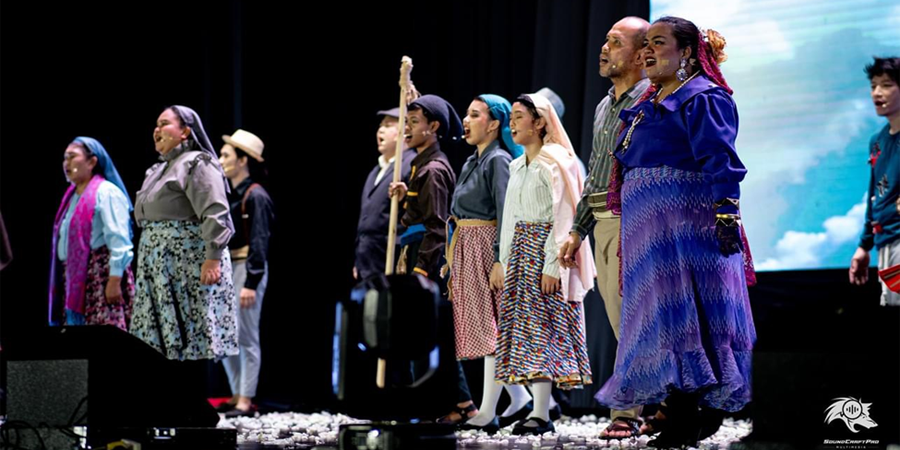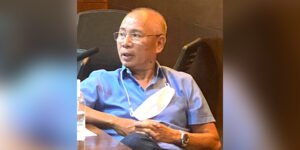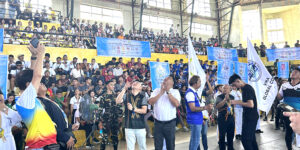• AGNES GASTON REYES

The world today seems to be tippy toeing toward World War III, God forbid. Everyday, armaments are unloaded in bombings of one country or the other, unlike the guerrilla warfares of the seventies. Bombings in countries today are of a magnitude that shocks human comprehension.
Around a hundred and seven years ago, on May 13, 1917, the Virgin Mary appeared to three shepherd children in Fatima. She warned them of another more horrible war (WWII) if people did not pray and did not do enough penance. She also asked them to pray the rosary and do the first Saturday devotion for the conversion of Russia. Twenty two years later, war did erupt bringing to the world terrible memories of genocide. In Europe, around six million Jews died in concentration camps and crematoriums. And if one was to believe some statistics, around the same numbers and even more Filipinos died during the Japanese occupation and subsequent liberation.
On March 2, a Saturday, the pleadings of the Virgin Mary at Fatima were presented in a theatrical version seemingly incongruous with the story. Fatima and the three shepherd children were staged in a musical in Filipino, at the University of St. La Salle Coliseum, which surprisingly, did not disappoint.
“Fatima, a Musical” was produced by a group of laymen belonging to the parish of Fatima in Quezon City. Sherwin Salonga, its director and producer, also wrote the play. Although the theatrical group does not earn from the musical, they allow benefit performances for various good causes.
When asked through email how and when he conceived the idea of making a musical on Fatima, Sherwin shared how he had, since Grade two, always been fascinated by the story of Fatima. He never lost that attraction. In fact, as a young adult, joining a music ministry, he developed his dream of making a musical about the Fatima story.
Several years later, while his group was wondering how to best celebrate the centennial anniversary of Fatima, Sherwin suggested his idea of a musical. The idea caught on and resonated with them. As Sherwin himself said of his creative output, “I wrote the script and lyrics in one week (talk about being inspired). I was helped by Martin John Arellano, Jong Santos and Jay Gonzales with the music.”
Through the hard work of the Carmelite friars, their secular members OCDS and Casa Maria affiliates, as clarified by Irene Gaston, Salonga’s troupe was brought to Bacolod. The musical was staged at the USLS for one day only, with two performances, a matinee and a gala. According to Gaston, Father Joey Mabborang OCD, clarified that the primary aim for bringing the musical to Bacolod was for evangelization. The repairs for “Our Lady’s Hill”, the Carmelites’ retreat house in Murcia, was the secondary plan.
The gala performance started an hour late. Still, when the musical finally came out, there was no restlessness among the audience, their attention completely riveted on stage. Salonga seemed to have captured the audience’s sensibilities by focusing not just on the holiness of the children or the Virgin Mary but instead on the reactions of the different kinds of people in that town.
As he himself puts it, “The play focuses not just on the supernatural aspect of the apparitions but also on the human dimension; the emotions and thoughts that must have pervaded in the hearts and minds of the protagonists and people of Fatima during the apparitions. What were the children experiencing during those confusing times? Their parents? The town folks? It is historical but contemporary, it will make you think but will also make you feel. It happened in 1917 but the issues are so now. I tried to give a different point of view to some characters, like Arturo Dos Santos (the administrator of Fatima who kidnapped the seers), he represents many of us: angry, doubting, questioning but at the same time yearning and seeking. His song is all about man’s eternal questions. Maria Rosa (Lucia’s mother) represents a convenient faith while Ti Marto (father of Jacinta and Francisco) represents a risky faith; any which they still believe but coming from different points of view and situation. The 3 children are children: willing, innocent, courageous and faithful. Sometimes we tend to put things to extremes: supernatural vs natural, we forget the in-between. The townsfolks represent many if not all of us: the hypocrites, the faithful, the good, the bad, the beautiful, the ugly. The prisoners’ scene is delightfully funny yet speaks about the forgiveness of God and the importance of repentance. Every time we stage it, different perspectives would be generated.”
The play culminated with the expected miracle of the sun, which was flashed mostly with light and sound technicals on the panoramic screen. Then the cast sort of gracefully moved about singing a finale of God’s grace and conversion. Many in the audience were enthralled clapping exuberantly as if they had truly experienced the great catharsis that came from the stupendous miracle, a hundred and seven years ago. For those who saw the play, it was a really wonderful event in preparation for Holy Week.*







